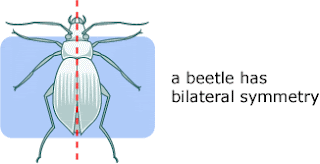Aqua-Propelled...an
amazing nautical
creature.
The Nautilus is part of a family of sea creatures which have seemingly made their way into today's oceans from a rift in time. It is the only remaining member of the family Nautilaceae, they look like they have for millions of years and have even been called 'living fossils', because they have existed in the ocean since the dinosaurs. In fact, they have existed longer than the dinosaurs but are not extinct. Scientists have used fossil data to determine that this species has not changed significantly in millions of years.
The
nautilus is considered a marine mollusc, this
is a category of marine animals that do not possess a backbone. They
are also in a category of marine animals known as Cephalopods,
characterized by a large head
and including arms or tentacles (meaning head-foot). Other examples of cephalopods
include octopi, squid, and cuttlefish. They also have bilateral
symmetry, which means if you
chopped them in half, the halves would be mirror images of each
other. Another characteristic of cephalopods is that their
blood contains hemocyanin, a protein that carries oxygen to
their body tissues. Hemocyanin is blue colored when it contains
oxygen (the opposite of people, where the protein hemoglobin is red
when carrying oxygen). No other cephalopod has an external shell
except the nautilus and it can hide completely in its shell if it
needs to.
Nautilidae are protected by smooth, whorled shells which shield their soft bodies from predators. Like other cephalopods, the nautilus has lots of tentacles but it has even more of them, up to 90! Their tentacles are retractable and they do not have little suckers on them like an octopus does, instead they have grooves for gripping. There are two small tentacles by the eye of the nautilus that are used for smell, this is the main way they find their food. The nautilus has a parrot-like beak with specialized teeth which is used to scrape food off of rocks and to help crush and shred their scavenged meals, which include the discarded shells of lobsters and hermit crabs; but nautiluses will also eat just about any discarded carrion they come across. The nautilus has a four-chambered heart and arteries and veins, it has nervous tissue but scientists do not believe it has a brain. Though scientists once believed that these ancient creatures had very limited intelligence, studies now show the presence of memory and an ability to improvise and change behavior relative to changing stimuli. Most species of nautilus are about 8 inches in diameter (20cm), but one particular dwarf species has a shell averaging 115mm, about 4.5 inches.
The chambers inside a nautilus. |
Nautiluses have a unique shell that can withstand ocean pressure to a depth of about 800 meters (2600ft). The shell is composed of two layers, a shiny inside and a flat white with brownish stripes outside. The shell is divided into chambers. As the nautilus grows it creates new larger chambers to grow into and seals off the older, smaller, chambers as it moves out, these chambers aid the nautilus with buoyancy. A newly hatched baby nautilus starts out with a four chambered shell and as it grows its shell can contain 30 or more chambers by the time it is mature.
If you look at a shark or an orca whale from above and below you can see that it is camouflaged to blend in well with its environment. Animals having darker markings on the top and white or lighter markings on the bottom to help them blend in are said to have counter-shading. The nautilus also uses counter-shading. When viewed from above the darker markings on the top of the shell help it blend in with the darker ocean water. When viewed from below, the white underside helps the animal blend in because it is viewed towards the lighter, sun touched, surface of the water. Cool!

countershading on a nautilus

Nautiluses "swim" in an amazing way, using a complex inner plumbing system with siphons, they draw water into and out of their shells, propelling them forward, up or down, a bit like a submarine filling or emptying its dive tanks. Nautiluses do not suffer from the bends and can raise and lower themselves quickly in the water without pressure damage.
The nautilus is difficult to raise in captivity and in the wild their eggs can take up to a year to hatch. They are a creature that matures late in life, up to 15 years and they only live about 20 years, so they reproduce slowly. They live in the Asian and Australian regions of the ocean, on the deep slopes of coral reefs and they like cooler water, only surfacing to warmer, shallower regions of water at night to feed. These interesting creatures are hunted for their beautiful shells and the meat is used as food. The inner shell is sought after for its iridescent beauty called 'mother of pearl'.
There have not been any regulations regarding the hunting of the nautilus and there were concerns that they were becoming endangered as a species from over hunting. As I was writing this article I found out that on October 3, 2016, a proposal to protect the nautilus was approved by CITIES (Convention on International Trade in Endangered Species) at a meeting in South Africa, now the nautilus will hopefully be a bit more protected. I think the nautilus is a beautiful and fascinating creature and I had to cut a lot of information out from the research I did for this article to make it a manageable length, because I realize not everybody will be as enamored of it as I am, but I wanted to share some interesting facts about this wonderful creature.
Sources:
USFish
and Wildlife.gov
Aquarium
of the pacific.org
(National
Aquarium) Aqua.org
Savethenautilus.com







No comments:
Post a Comment